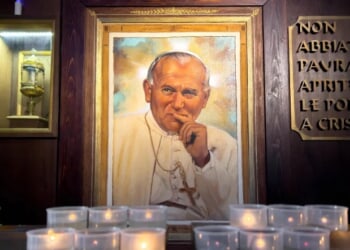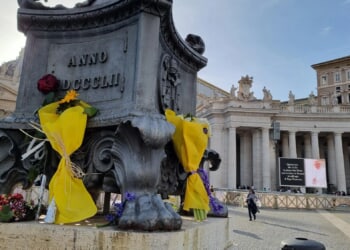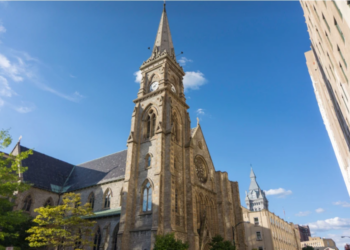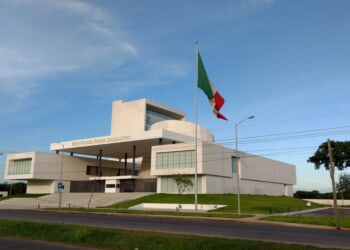Francis, the 266th supreme pontiff of the Roman Catholic Church and spiritual shepherd of her estimated 1.39 billion members for nearly twelve years, died Monday in Rome at the age of 88 weeks after after being hospitalized Feb. 14 to treat double pneumonia, the Vatican announced.
As the news broke across Christendom and the world, church bells began to solemnly toll and the prayers of millions were raised in gratitude for his life, in hope and concern for the future of the Church and to beseech God’s mercy upon the deceased Vicar of Christ.
Pope Francis’s health in his final days drew attention after a number of his public events were cancelled or delegated to others.
Cardinal Kevin Farrell announced the pope’s death in a statement released by the Vatican.
“At 7:35 this morning, the Bishop of Rome, Francis, returned to the house of the Father,” the cardinal said. “He taught us to live the values of the Gospel with faithfulness, courage, and universal love, especially in favor of the poorest and the marginalized.”
Thank you for the affection, prayer and closeness with which you are accompanying me in these days.
— Pope Francis (@Pontifex) February 16, 2025
I have recently received many messages of affection, and I have been particularly struck by the letters and drawings from children. Thank you for your closeness, and for the consoling prayers I have received from all over the world!
— Pope Francis (@Pontifex) February 23, 2025
I would like to thank you for your prayers, which rise up to the Lord from the hearts of so many faithful from many parts of the world. I feel all your affection and closeness and, at this particular time, I feel as if I am “carried” and supported by all God’s people.
— Pope Francis (@Pontifex) March 2, 2025
The pope nevertheless remained in good spirits after he was hospitalized, the Holy See Press Office said. At times, he was reportedly able to breathe unassisted, eat, read, sit upright, work, offer jokes, spend time in the hospital’s chapel, watch the Holy Mass on television and receive the Eucharist as well as visitors. Though this hospitalization was both the longest of his papacy and without being see by the public, he continued to release messages — and sign Church documents — from Gemelli Polyclinic.
Notably, the Holy Father continued his daily practice of calling the only Catholic community in Gaza, Holy Family Parish, following the Oct. 7, 2023 attack on Israel by Hamas. Pope Francis regularly checked on the parish when speaking with Father Gabriel Romanelli, a fellow Argentine, and his assistant, Fr. Youssef Asaad. Even at the onset of being hospitalized, the pope reportedly insisted on making a video call to express his continued closeness and bless those who gathered in the church even during a local blackout.
In recent months, Pope Francis suffered from limited mobility, becoming dependent on a cane and, after two falls injured him, a wheelchair. He subsequently reduced the degree of engagement with public crowds and delegated liturgical roles as celebrant to other clergy. The pope had also been diagnosed with diverticulitis, a common issue involving the inflammation or infection of the colon, which was addressed with a 2021 surgery removing approximately twelve inches of that organ. In addition, long before becoming pope, he experienced a severe respiratory infection and underwent a procedure to remove part of one lung, The Associated Press reported. The pope’s past mobility similarly suffered due to sciatica.
The pope had prepared a letter of resignation “in case of impediment due to health reasons” at the beginning of his pontificate in 2013, His Holiness revealed during a Dec. 17, 2022 interview with ABC, a Spanish newspaper. As the pope’s health declined more than a decade later, however, Cardinal Secretary of State Pietro Parolin denied to an Italian newspaper, Corriere della Sera, being aware of any push for Pope Francis to resign, despite his being among the ten oldest pontiffs to have served, Vatican News reported.
“Honestly, I am not aware of such manuevers, and in any case, I try to stay out of them. On the other hand, I think it is quite normal in these situations for unverified rumours to circulate or for misplaced comments to be made — this is certainly not the first time. However, I do not believe there is any particular movement in this regard, and so far, I have not heard anything of the sort,” he told the outlet.
Parolin later kicked off a daily devotion including the recitation of the Rosary with the public gathered in St. Peter’s Square for the pope’s health during his 38-day hospitalization. Churches around the world likewise offered the sacrifice of the Mass for the intentions and well-being of the Holy Father.
Hundreds of faithful gathered in St. Peter’s Square on Monday evening to pray the Rosary for Pope Francis’ health and recovery. Led by Vatican Secretary of State Cardinal Pietro Parolin, the initiative, organized by Rome-based cardinals, will continue each evening at 9 p.m. pic.twitter.com/gASntFsbcI
— EWTN Vatican (@EWTNVatican) February 24, 2025
On February 24, prayers for Pope Francis continued at Gemelli Hospital, where the Holy Father remains hospitalized. In the St. John Paul II Chapel, Adoration was led by the chaplain at noon, followed by Holy Mass.
Let’s continue to pray for Pope Francis. pic.twitter.com/ZCZm5mskYg— EWTN Vatican (@EWTNVatican) February 24, 2025
By comparison, Polish-born Pope John Paul II, whose 9,665-day pontificate from Oct. 16, 1978 to April 2, 2005 was recorded as the third-longest in Church history, officially died from septic shock and cardio-circulatory collapse at the age of 84, The New York Times reported, citing Vatican records. He also suffered from Parkinson’s disease and arthritis, in addition to two gunshot wounds from a failed May 13, 1981 assassination attempt.
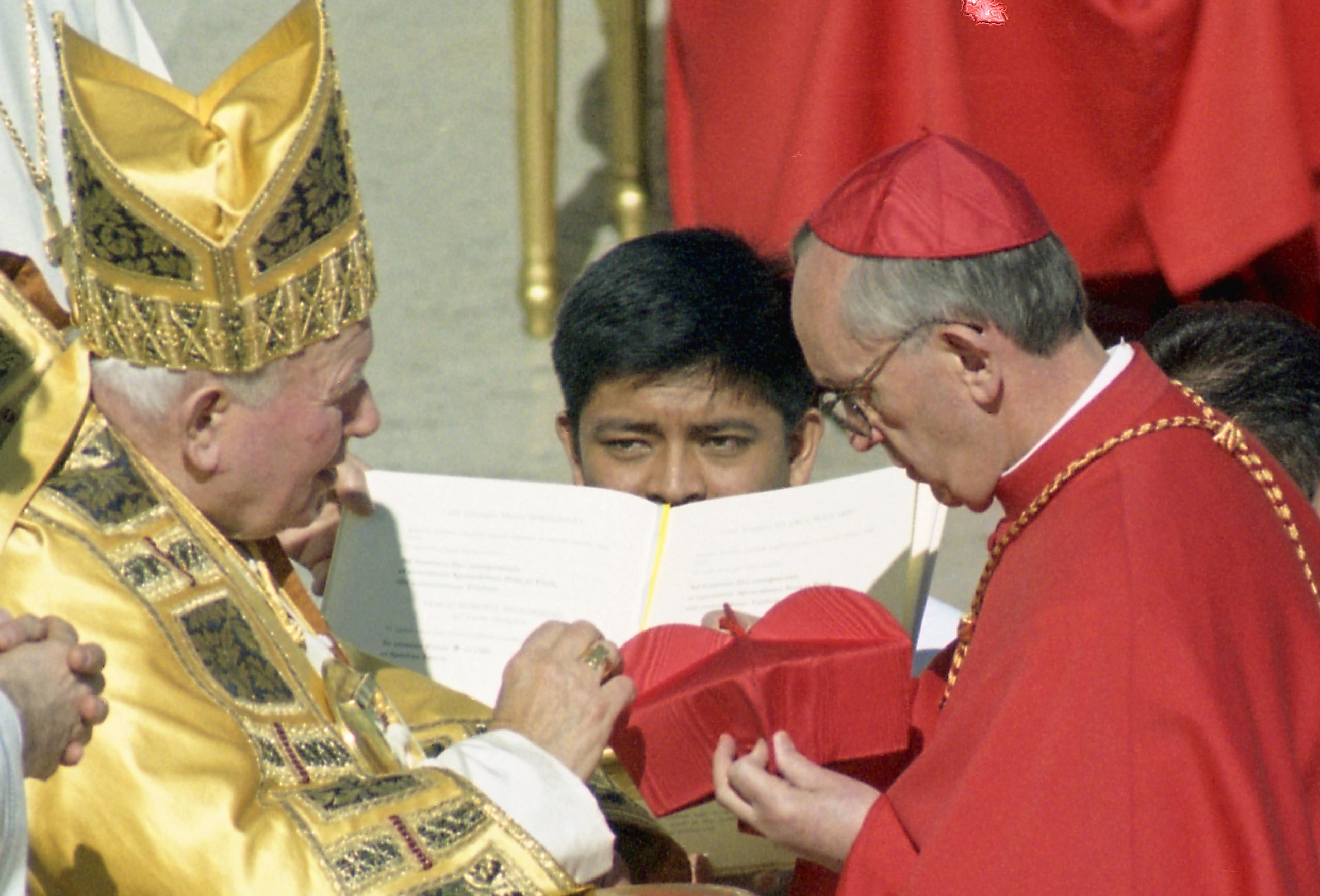
VATICAN CITY, VATICAN – FEBRUARY 21: Pope John Paul II (Karol Wojtyła) names Jorge Mario Bergoglio as cardinal during a consistory in St. Peter’s Square on February 21, 2001 in Vatican City, Vatican. Bergoglio was elected Pope on 13 March 2013, the second day of the 2013 papal conclave, taking the papal name Francis. (Photo by Franco Origlia/Getty Images)
Similarly, Pope Benedict XVI, the predecessor of Pope Francis, led a 2,872-day pontificate from April 19, 2005 to Feb. 28, 2013. The accomplished German theological scholar shocked the world with a Feb. 11 announcement of his intention to abdicate his seat on the Chair of St. Peter upon the election of a successor (the last pope to step down was Pope Gregory XII in 1415), referencing how his “strength of mind and body … [had] deteriorated” due to “advanced age.” Reports would later emerge that His Holiness had lost sight in his left eye in addition to experiencing difficulty walking. After the election of Pope Francis, Pope Emeritus Benedict XVI withdrew to a secluded life of prayer and reflection in a monastery in the Vatican’s gardens but occasionally met with his successor throughout the next decade. This collegiality continued to bear fruit, Pope Francis revealed to Spanish journalist Javier Martínez-Brocal in a series of interviews between July 2023 and January 2024, as Pope Emeritus Benedict XVI “always defended” him and “never took his support away,” even in the face of criticism and attacks. He also reportedly never admitted he disagreed with the seemingly more liberal Argentine pontiff, but encouraged him to gather more information or consider other perspectives. Having originally expected to conclude the “last stage of his pilgrimage on this earth” soon after his abdication, “God’s Rottweiler” eventually died of cardiogenic shock Dec. 31, 2022 following respiratory failure at the age of 95, according to Vatican records. (RELATED: Pope Benedict Leaves Lasting Legacy As Millions Of Catholics Mourn His Loss)
A glimpse at the public meetings of Pope Francis and Pope Emeritus Benedict XVI since 2013.
As Pope Francis just said: “We feel in our hearts so much gratitude: gratitude to God for having given him to the Church and to the world; gratitude to him.”#ThankYouBenedictXVI pic.twitter.com/sa3KilxI62— EWTN News (@EWTNews) December 31, 2022
Pope Francis was born Dec. 17, 1936 with the name Jorge Mario Bergoglio in Buenos Aires, Argentina, according to his official biography. The son of Italian immigrants, his father, Mario, was a railway company accountant; his mother, Regina Sivori, primarily raised their five children. Bergoglio graduated as a chemical technician before discerning the priesthood as a vocation, entering the Diocesan Seminary of Villa Devoto. On March 11, 1958 he entered a prominent Catholic religious order, the Society of Jesus, also known as the Jesuits. He was ordained a priest Dec. 13, 1969. Pope John Paul II elevated Bergoglio to be an auxiliary bishop of Buenos Aires on May 20, 1992 and then a cardinal on Feb. 21, 2001. Bergoglio was elected March 13, 2013 as Pope Benedict XVI’s successor, taking his Petrine name after St. Francis of Assisi and his motto from a homily by St. Bede, “miserando at atque eligendo“ (“by having mercy and choosing”). He formally approved the Church’s declaring Pope John Paul II to be a saint, canonizing him April 27, 2014.
During his 4,422-day papacy, Pope Francis made 72 visits to various states and territories (including repeats) as part of 47 international trips. Notably, he journeyed to Cuba and the United States between Sept. 19-27, 2015, including stops in Washington, New York and Philadelphia.
Incidently, in a break with recent tradition, the pope revealed Dec. 12, 2023 to Mexico’s N+ news outlet he chose to be buried in Rome’s Papal Basilica of St. Mary Major where he often prayed before and after travels and medical procedures because of his “very strong connection” with the church, calling it a “great devotion.” Seven other popes are buried there, according to the basilica.
He reigned as the worldwide Catholic-identifying population between Dec. 31, 2012 to Dec. 31, 2022 increased by 13.1%, from roughly 1.23 billion to 1.39 billion adherents, according to the latest available Church estimates. In comparison, the global population increased by 11.6%, from roughly 7.02 billion to 7.84 billion people during the same time period.
Throughout his ministry, Pope Francis sought to lead Christians in a secularized age, addressing matters involving climate change and human ecology, family issues, Christian unity and human fraternity and solidarity. He also frequently called to mind the plights of the poor, the outcast and suffering throughout the world — notably describing the Church as “a field hospital” — and promoting mercy and forgiveness in pursuit of peace and justice. While Pope Francis pursued numerous reforms of the Vatican’s handling of sex abuse cases involving clergy and minors, finances, governance and structure, changes to the “Catechism of the Catholic Church” and restricting the popular celebration of the centuries-old Latin Mass liturgy were met with particular criticism from conservatives in the Church. (RELATED: House Report Sheds Light On FBI Targeting Of Catholics, Pro-Lifers)
Vinicio Riva, whose face was disfigured by von Recklinghausen’s disease and who received a long embrace from Pope Francis ten years ago in St. Peter’s Square, has passed away at age 58. https://t.co/3YUo0EitEa
— Vatican News (@VaticanNews) January 11, 2024
Church commentators have speculated how the Holy Father’s upbringing in Argentina may have developed in him some suspicion of capitalism while remaining opposed to the injustices of communism. As such, a number of the messages from his pontificate appeared to some Western critics as promoting progressive values of tolerance and inclusion towards international matters relating to immigration, environmental protection, the death penalty and pro-choice Catholic politicians receiving the Eucharist. Similarly, some actions by Pope Francis were met with confusion by the faithful when reported with limited context by media outlets, including a July 28, 2013 remark on homosexuality, “Who am I to judge?” as well as his Dec. 18, 2023 approving a declaration allowing priests to bless members — but not the union — of same-sex couples. (RELATED: ROOKE: Pope Francis Ignores Americans In Attack On US Immigration Policy)
At times, the confusion surrounding the pope’s statements have raised questions around papal infallibility. The authority of the pope (“papa” in Latin) is traced back through the ages to the primacy of St. Peter among the apostles who were first chosen by Jesus to join his ministry, according to the “Catechism of the Catholic Church.” As Roman pontiff, the pope “has full, Supreme, and universal power over the whole Church, a power which he can always exercise unhindered,” the Catechism states. Likewise, the Catholic dogma of papal infallibility applies solely to the pope’s definitive proclamation of doctrine “pertaining to faith or morals” being free of error, not that the pope himself is free from sin or error. When the pope is not speaking to all Catholics in his official capacity as the head of the Church, the faithful are not mandated to be bound to his words with “the obedience of faith” but nevertheless treat the Holy Father and his teachings with respect and serious consideration. As the pope’s authoritatively speaking ex cathedra (“from the chair”) is rarely formally invoked, the faithful are free to have disagreements with the prudential judgments and informal remarks of the popes, but not the dogma of the Church. (RELATED: Bishop Says Catholic Teaching Does Not Support ‘Open Border Policy’)
An incident involving the inclusion of a pair of Amazonian idols during an Oct. 4, 2019 tree-planting ceremony in the Vatican gardens attended by Pope Francis and indigenous performers also drew significant criticism from conservative Catholics. The statues, carved images of a naked pregnant Amazonian woman, supposedly represented Mary, the mother of Jesus. Confusion arose from the pope’s reference to the statues as “Pachamama,” the name — roughly translated as “Mother Earth” — traditionally given to a fertility goddess in the Andes region of South America. Pope Francis issued an apology after a video arose showing two men entering a Catholic church near the Vatican to remove the statues and throw them into Rome’s Tiber River. The statues, which were on display “without idolatrous intentions” according to the pope, were later recovered.
When asked Sept. 13, 2024 about the morality of voting for a candidate in favor of abortion in the then-upcoming U.S. presidential election, Pope Francis suggested voters select “the lesser of two evils,” referring indirectly to Republican nominee Donald Trump and Democratic nominee Vice President Kamala Harris.
President @realDonaldTrump and President @EmmanuelMacron give a message to Pope Francis 🇺🇸🇫🇷 pic.twitter.com/878A5ZMrpl
— Margo Martin (@MargoMartin47) February 24, 2025
The day before Trump’s second inauguration as president of the United States, Pope Francis bluntly denounced his plans to significantly step up enforcement of immigration actions such as deportations as a “disgrace.”
My prayers are with Pope Francis. I pray he recovers quickly and finds comfort and strength during this time.
~Thomas D. Homan— Thomas D. Homan (@RealTomHoman) February 23, 2025
“It would make the migrants, who have nothing, pay the unpaid bill,” the pope claimed during an interview on Italy’s Channel 9 “Che Tempo Che Fa” (“What The Weather Is Like”) talk show, Reuters reported. “It doesn’t work. You don’t resolve problems this way.”
He nevertheless continued an unofficial tradition of sending the newly inaugurated president a congratulatory telegram.
Pope Francis subsequently sent a surprise Feb. 10 letter to the bishops of the United States expressing dismay at the Trump administration’s deportation plans and how Vice President JD Vance, himself a Catholic, sought to defend the policy invoking a theological concept, ordo amoris (“rightly-ordered love”).
Let’s all say a prayer for Pope Francis, who appears to have some serious health issues.
— JD Vance (@JDVance) February 18, 2025
Vance responded during his Feb. 28 remarks at the National Catholic Prayer Breakfast in Washington:
But every day since I heard of Pope Francis’s illness, I say a prayer for the Holy Father, because while, yes, I was certainly surprised when he criticized our immigration policy in the way that he has … I believe that the pope is fundamentally a person who cares about the flock of Christians under his leadership. And he’s a man who cares about the spiritual direction of the faith.
Vance met the Holy Father and exchanged egifts from him Easter Sunday, hours before the pope passed away. Pope Francis made a rare — and final — public appearance to the crowd gathered after Mass in Saint Peter’s Square for his Urbi et Orbi blessing.
The pope had also previously expressed concerns with Trump’s rhetoric relating to a promised border wall with Mexico, criticizing him Feb. 17, 2016 as “not Christian.” (RELATED: Pope Francis Questions Trump’s Christianity, Trump Fights Back)
As part of his first international travels as president, Trump met privately with Pope Francis for approximately 30 minutes on May 24, 2017 before promising, “I won’t forget what you said.” Trump later spoke with His Holiness in the aftermath of an April 15, 2019 fire which devastated France’s Notre Dame Cathedral.
Following the announcement of the death of the pope, Vatican officials follow the protocols described in the 1996 apostolic constitution “on the vacancy of the Apostolic See and the election of the Roman pontiff,” “Universi Dominici Gregis” (“The Lord’s whole flock”):
As soon as he is informed of the death of the Supreme Pontiff, the Camerlengo [chamberlain] of Holy Roman Church must officially ascertain the Pope’s death, in the presence of the Master of Papal Liturgical Celebrations, of the Cleric Prelates of the Apostolic Camera and of the Secretary and Chancellor of the same; the latter shall draw up the official death certificate. The Camerlengo must also place seals on the Pope’s study and bedroom … he must notify the Cardinal Vicar for Rome of the Pope’s death, whereupon the latter shall inform the People of Rome by a special announcement …
Other customs involved in confirming the death of a pope, such as thrice calling out the deceased’s baptismal name and using a special silver hammer to strike his head, are unconfirmed as they are not explicitly referenced in the apostolic constitution or its subsequent modifications.
Meanwhile, the Catholic Church enters a nine-day period of mourning known as novemdiales, during which a different cardinal each day celebrates public funeral rites. The body of the pope must normally be buried between four and six days after his death, Vatican norms specify. 138 cardinals — 110 of which have been created by Pope Francis — are eligible to gather in the Sistine Chapel in the Vatican to start the secretive ancient process to elect the next pope, the papal conclave. Only those under the age of 80 may submit a ballot naming their preferred candidate. Ballots are burned after each round; the color of the resulting smoke from arguably the world’s most famous chimney atop the Sistine Chapel signifies the outcome: black for an inconclusive vote or white for a successful vote.
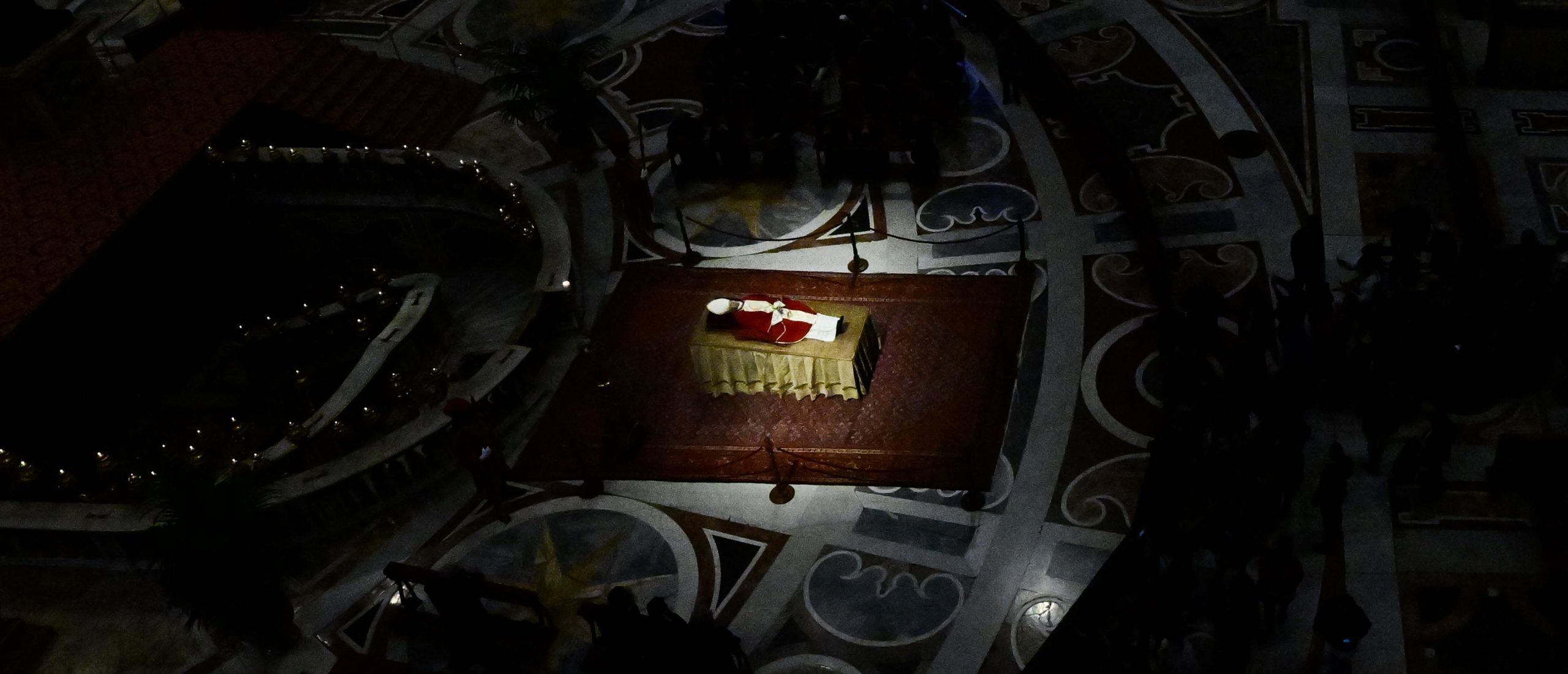
TOPSHOT – The body of Pope Emeritus Benedict XVI lies in state at St. Peter’s Basilica in the Vatican, on January 3, 2023. – Benedict, a conservative intellectual who in 2013 became the first pontiff in six centuries to resign, died on December 31, 2022, at the age of 95. Thousands of Catholics began paying their respects on January 2, 2023 to former pope Benedict XVI at St Peter’s Basilica at the Vatican, at the start of three days of lying-in-state before his funeral. (Photo by TIZIANA FABI/AFP via Getty Images)
Upon earning a two-thirds majority of the voting cardinals, the leading candidate is asked if he will accept the election and, if so, to choose a name to be associated with his new Petrine ministry. The new supreme pontiff is then announced to the massive crowds waiting in St. Peter’s Square and throughout the world as the next leader of the Roman Catholic Church with the Latin proclamation, “Habemus Papam” (“We have a pope!”).



![NYC Tourist Helicopter Falls into Hudson River, Siemens Executive and Family Among Those Killed [WATCH]](https://www.right2024.com/wp-content/uploads/2025/04/NYC-Tourist-Helicopter-Falls-into-Hudson-River-Siemens-Executive-and-350x250.jpg)


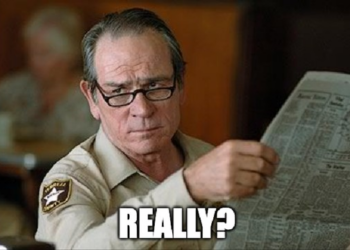


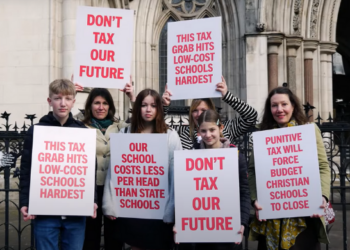

![Red Sox Fan Makes the ‘Catch of the Day’ with Unconventional ‘Glove’ [WATCH]](https://www.right2024.com/wp-content/uploads/2025/04/Red-Sox-Fan-Makes-the-‘Catch-of-the-Day-with-350x250.jpg)
